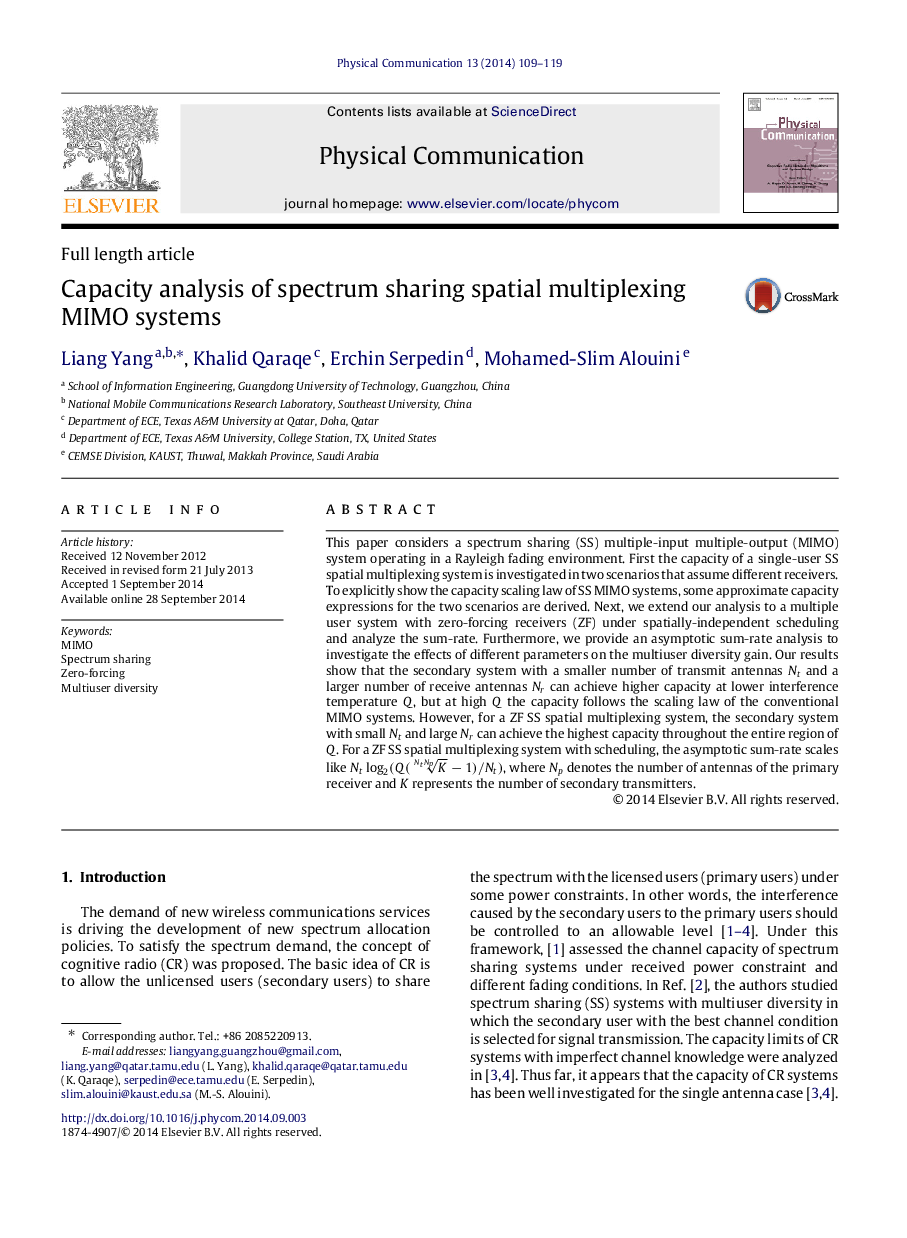| Article ID | Journal | Published Year | Pages | File Type |
|---|---|---|---|---|
| 466724 | Physical Communication | 2014 | 11 Pages |
This paper considers a spectrum sharing (SS) multiple-input multiple-output (MIMO) system operating in a Rayleigh fading environment. First the capacity of a single-user SS spatial multiplexing system is investigated in two scenarios that assume different receivers. To explicitly show the capacity scaling law of SS MIMO systems, some approximate capacity expressions for the two scenarios are derived. Next, we extend our analysis to a multiple user system with zero-forcing receivers (ZF) under spatially-independent scheduling and analyze the sum-rate. Furthermore, we provide an asymptotic sum-rate analysis to investigate the effects of different parameters on the multiuser diversity gain. Our results show that the secondary system with a smaller number of transmit antennas NtNt and a larger number of receive antennas NrNr can achieve higher capacity at lower interference temperature QQ, but at high QQ the capacity follows the scaling law of the conventional MIMO systems. However, for a ZF SS spatial multiplexing system, the secondary system with small NtNt and large NrNr can achieve the highest capacity throughout the entire region of QQ. For a ZF SS spatial multiplexing system with scheduling, the asymptotic sum-rate scales like Ntlog2(Q(KNtNp−1)/Nt), where NpNp denotes the number of antennas of the primary receiver and KK represents the number of secondary transmitters.
